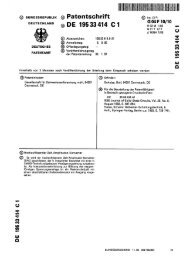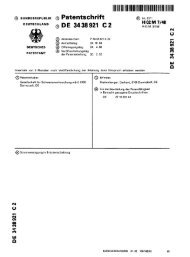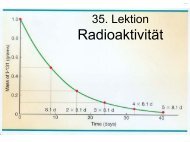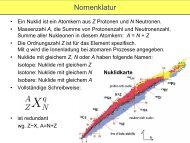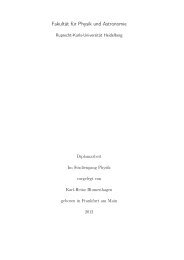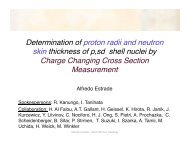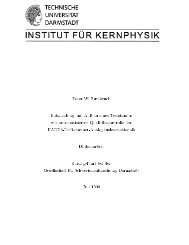Nucl.Data Tables 7
Nucl.Data Tables 7
Nucl.Data Tables 7
Create successful ePaper yourself
Turn your PDF publications into a flip-book with our unique Google optimized e-Paper software.
Similarly,most of the points plotted in Fig. 8 are<br />
taken from the smoothed curves of Fig. 6 at the six indi-<br />
cated energies. In addition, several values of the relative<br />
stopping power at 4.43 MeV 2a are shown to verify its Z-de-<br />
pendence. The smoothed, isoergic curves through the data<br />
provide an estimate of the re!ative stopping power of O, Ne,<br />
Xe, and Rn as well as of other gaseous media. The complete<br />
family of relative stopping-power curves for gases is shown<br />
in Fig. 10.<br />
G. Stopping Power of Compoulzls<br />
Although there is some evidence that the Bragg addi-<br />
tivity rule relating the stopping power of a compound to<br />
that of its constituents does not strictly hold, 30 the devia-<br />
tions from the rule are not large and have been observed<br />
mainly in the stopping power of hydrocarbons for protons.<br />
These deviations are poorly understood and difficult to sys-<br />
tematize, and they have little effect on the calculated range<br />
of a high-energy ion. For present purposes the additivity<br />
rule is assumed to hold well enough to use in the calculation<br />
of stopping powers of polyethylene, Mylar, and water.<br />
According to this rule, the relative stopping power of<br />
a compound of molecular weight M containing N i atoms of<br />
atomic weight Ai, etc., is given by the formula<br />
(dE/dx)compound 1 NiAi(dE/dx)i<br />
(dE/dx)A l = -~ ~,,<br />
i (de/dX)AI '<br />
where (dE/dx)i is the stopping power of the pure element<br />
NOKTHCLIFFE AND SCHILLING<br />
labeled by subscript i. In the case of Mylar (CmHsO4) for<br />
example we have<br />
(dE/dx)uyla r l r (dE/dx)c<br />
(dE/dX)A! - 192 L120 (dE/dX)A I<br />
+ 8<br />
(de/dx)ti (aE/dx )o l<br />
(dE/dx)A l + 64 ~ j .<br />
This formula for Mylar and the analogous formulas for<br />
polyethylene ([CH2]n) and water (H20) were used to cal-<br />
culate relative stopping powers for these compounds from<br />
the relative stopping-power curves for elements (Figs. 9 and<br />
10). 31<br />
H. Calculation of Stopping-Power <strong>Tables</strong><br />
As described in Part D of this section, each stopping-<br />
power curve of Fig. 2 was fitted at nine points in two sec-<br />
tions by a generalsecond-order polynomial with five coef-<br />
ficients (yielding ten coefficients per curve). The nine points<br />
were approximately equispaced on the scale of log Elm in<br />
the region 0.0125






